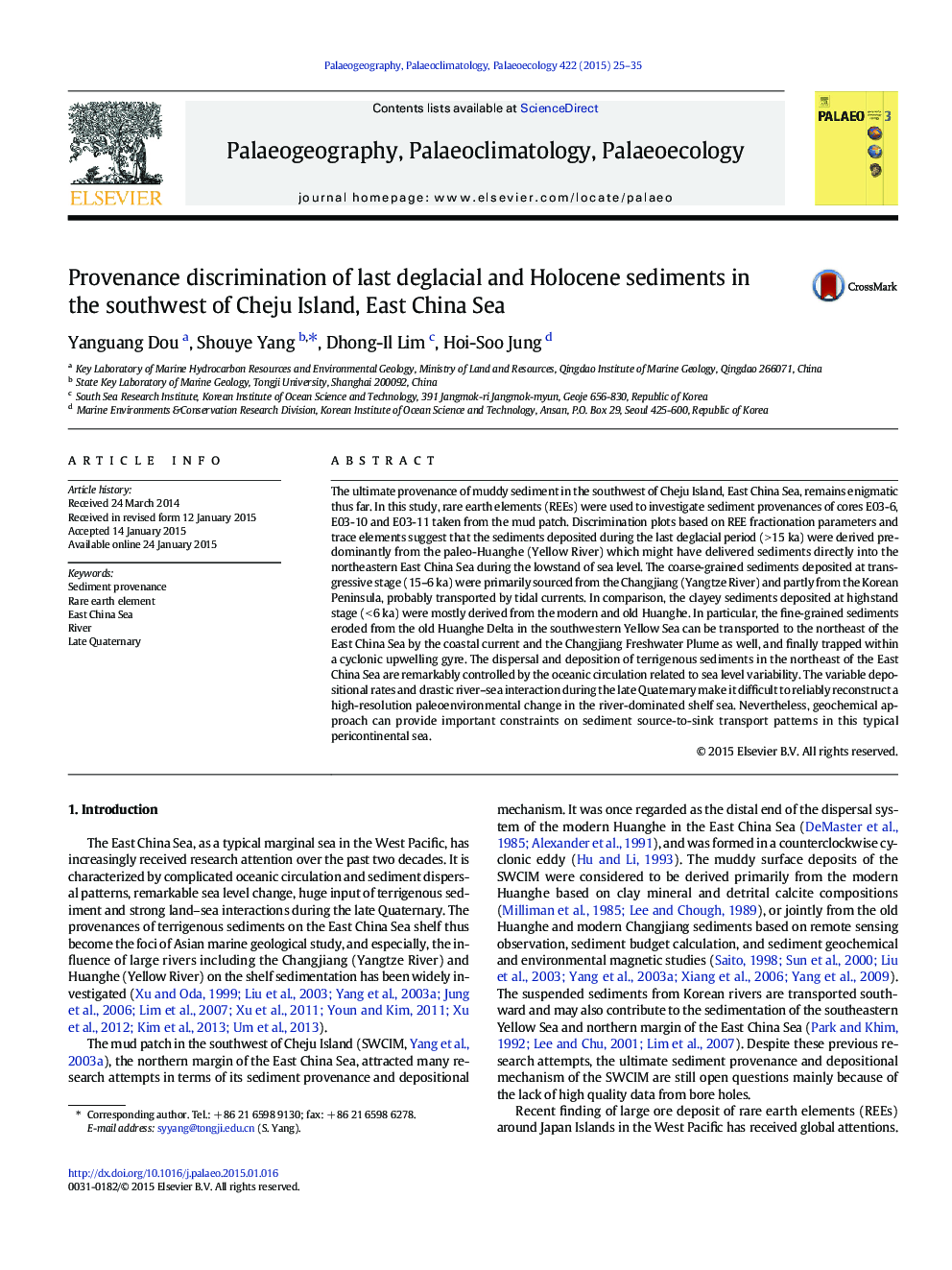| کد مقاله | کد نشریه | سال انتشار | مقاله انگلیسی | نسخه تمام متن |
|---|---|---|---|---|
| 4466017 | 1622168 | 2015 | 11 صفحه PDF | دانلود رایگان |
• Rare earth elements constrain sediment sources in the northern East China Sea.
• Large rivers from China dominated the sedimentation over the last 15 ka.
• Sea level and oceanic circulation controlled the sediment transport on the shelf.
• Strong river–sea interaction characterized the shelf deposition in the late Quaternary.
The ultimate provenance of muddy sediment in the southwest of Cheju Island, East China Sea, remains enigmatic thus far. In this study, rare earth elements (REEs) were used to investigate sediment provenances of cores E03-6, E03-10 and E03-11 taken from the mud patch. Discrimination plots based on REE fractionation parameters and trace elements suggest that the sediments deposited during the last deglacial period (> 15 ka) were derived predominantly from the paleo-Huanghe (Yellow River) which might have delivered sediments directly into the northeastern East China Sea during the lowstand of sea level. The coarse-grained sediments deposited at transgressive stage (15–6 ka) were primarily sourced from the Changjiang (Yangtze River) and partly from the Korean Peninsula, probably transported by tidal currents. In comparison, the clayey sediments deposited at highstand stage (< 6 ka) were mostly derived from the modern and old Huanghe. In particular, the fine-grained sediments eroded from the old Huanghe Delta in the southwestern Yellow Sea can be transported to the northeast of the East China Sea by the coastal current and the Changjiang Freshwater Plume as well, and finally trapped within a cyclonic upwelling gyre. The dispersal and deposition of terrigenous sediments in the northeast of the East China Sea are remarkably controlled by the oceanic circulation related to sea level variability. The variable depositional rates and drastic river–sea interaction during the late Quaternary make it difficult to reliably reconstruct a high-resolution paleoenvironmental change in the river-dominated shelf sea. Nevertheless, geochemical approach can provide important constraints on sediment source-to-sink transport patterns in this typical pericontinental sea.
Journal: Palaeogeography, Palaeoclimatology, Palaeoecology - Volume 422, 15 March 2015, Pages 25–35
